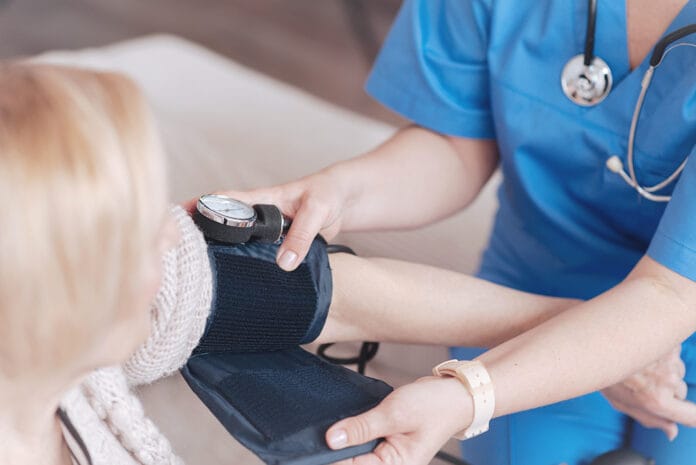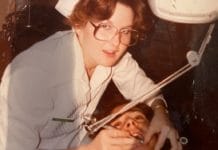My dental hygiene program director once said, “We’re more than just pickers and flickers.” The program instructors really strived to make sure we understood full-body health and how our body’s systems and oral health are interconnected.
We were taught to always take blood pressure before our clinic appointments. When I started my first dental hygiene job right out of school as a community health hygienist, I found it imperative that blood pressure be taken in the clinic.
Twice during my time at the community health clinic, I had patients present with blood pressure that was so high I simply did not feel comfortable having them in my chair. I sent the patients to their physicians immediately. I remember calling one of the dental patients the next day to check in on him, and he told me that his physician adjusted his meds and prescribed a full week of rest ─ absolutely no activity. The patient was glad, and so was I.
Sneaking Vitals into an Appointment
As a dental hygienist who considers herself a well-educated health care professional, I absolutely bristle when I hear other hygienists say they don’t need to take blood pressure for “just a prophy.” It doesn’t matter if you are or aren’t using anesthetic; taking blood pressure even before a prophy still may help to avoid a medical emergency in your chair. As a professional providing care to these patients, we owe them our knowledge and consideration.
Another plus to recording blood pressure is you can observe long-term trends in your patient’s health, and you can establish a baseline record for your patient. If your patient is prehypertensive or uncontrolled, you may recommend that they consult with a physician. We see our patients at least twice a year; we’re the perfect “watchers on the wall” for hypertension!
At every appointment, I ask the patient if they’re okay with taking radiographs. If they are, I stick the wrist cuff on them and let it do its thing while I run to grab the radiograph sensor. By the time I grab the sensor and get back to my op, the cuff is done reading. I lose zero time in the appointment and truly could be aiding in the longevity of my patient’s health. There are plenty of clever and creative ways that each hygienist can sneak vitals into their regular appointment flow.
Taking blood pressure is a simple yet important step to each appointment, and it’s also an effective way to assist our patients in feeling that they are receiving exceptional care and genuine interest. And, let’s be honest, it also serves as a gentle reminder to them as well that we are well-educated health care professionals.
This record may also benefit your dentist in the future if she or he is planning sedation or another procedure for the patient that may be high risk.
Applying the Numbers
Let’s get into some numbers so we can truly understand how important this topic is.
The American Heart Association reports that 46% of adults in the United States have hypertension. That’s almost half the adults you and I know! Hypertension is the second deadliest killer among adults, second behind smoking, and contributes to heart disease and stroke. Dr. Paul Whelton, the lead author of the guidelines published in the American Heart Association journal, Hypertension and the Journal of the American College of Cardiology, published findings proving that once you become hypertensive you have doubled your risk for cardiovascular complications.1
Whelton’s 2017 guidelines set determining levels of hypertension. The guidelines are as follows:1
- Normal: Less than 120/80 mmHg
- Elevated: Systolic (top number) between 120-129 mmHg and diastolic (bottom number) less than 89 mmHg
- Stage I hypertension: Systolic between 130-139 mmHg or diastolic between 80-89 mmHg
- Stage II hypertension: Systolic at least 140 mmHg or diastolic at least 90 mmHg
- Hypertensive crisis: Systolic over 180 mmHg and/or diastolic over 120 mmHg
Signs of a hypertensive crisis include blurred vision, headache, nausea or vomiting, shortness of breath or chest pain, dizziness, weakness, and behavior changes, such as confusion or forgetfulness.2
When I have had patients in my op who present with high blood pressure, I always make sure to ask how they are feeling. I ask a handful of questions and observe the patient for any changes in behaviors. I ensure my patient isn’t slurring his or her speech and is talking clearly and concisely.
If your patient presents in hypertensive crisis, wait five minutes and take the patient’s blood pressure again. (I often grab a bicep cuff for the second reading because they’re a little more reliable than the wrist cuff, and I take it on the opposite arm.)
Ask your patient if they are having any of the symptoms of hypertensive crisis listed above and observe their behavior. If the second reading is still greater than 180/120 mmHg, explain to the patient what you are finding, why you can’t treat them, and encourage them to call their physician immediately to see if they can be seen ASAP. If the patient doesn’t have a primary caregiver, direct them to your local walk-in clinic or urgent care.
Encourage your patient to get a ride from a friend or relative or offer to call them a cab. If the patient insists on driving themselves and they notice any of the signs listed above, or if their current condition worsens, they should pull over and seek assistance.
An Education Opportunity
Education may become an important conversation during your patient’s recall appointments. The Center for Disease Control and Prevention lists six lifestyle changes to aid in better hypertensive control.3
- Not smoking
- Stress management
- Maintaining a healthy weight
- Getting enough sleep
- Eating a healthy diet, limiting sodium and alcohol
- 150 minutes of exercise per week – at least 30 mins a day, five days a week
It is important to support, educate, and care for our patients in any way we can, and it is important for us to give ourselves the credit we deserve! We are more than prophy robots, production pushers, oral hygiene lecturers, and hotties in loupes. We are health care providers. We took pharmacology, psychology, chemistry, anatomy and physiology, microbiology, nutrition, etc. We worked hard for our title, and treating our daily responsibilities with disregard is a disservice to our profession. Giving anything less than our best is a disservice to our patients.
Before you leave, check out the Today’s RDH self-study CE courses. All courses are peer-reviewed and non-sponsored to focus solely on pure education. Click here now.
Listen to the Today’s RDH Dental Hygiene Podcast Below:
References
- High Blood Pressure Redefined for First Time in 14 Years: 130 Is the New High. (2017, November 13). American Heart Association. Retrieved from https://newsroom.heart.org/news/high-blood-pressure-redefined-for-first-time-in-14-years-130-is-the-new-high
- Hypertensive Crisis. (2021, March 4). Drugs.com. Retrieved from https://www.drugs.com/cg/hypertensive-crisis.html
- Prevent High Blood Pressure. (2020, February 24). Centers for Disease Control and Prevention. Retrieved from https://www.cdc.gov/bloodpressure/prevent.htm












